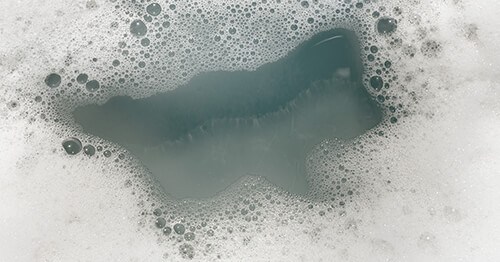Significant Factors Behind Discharge in the Bathtub
Significant Factors Behind Discharge in the Bathtub
Blog Article
Are you currently searching for information concerning Why sewage is coming up through your bathtub?

Sewer backup in the bathtub can be an upsetting and unhygienic issue for any type of house owner. Not only is it bothersome, however it additionally positions significant health and wellness risks and suggests underlying concerns with the plumbing system. Understanding why sewage is showing up via the tub is crucial for taking suitable activity to address the issue effectively.
Intro to the Concern
Usual Factors for Sewer Backup
Obstructions in the Drain Line
Among one of the most usual reasons for sewage back-up is a clog in the sewer line. This can take place because of the buildup of debris, oil, or foreign objects in the pipelines, preventing correct flow and causing sewage to back up into your tub.
Tree Origin Breach
Tree roots looking for dampness and nutrients can penetrate sewer lines with small cracks or joints. Gradually, these origins can expand and increase, causing substantial damages to the pipes and bring about sewer back-up concerns.
Comprehending the Issue
When sewer starts backing up right into the tub, it's a clear indication of an issue with the drain system. The wastewater that should be flowing away from your home is rather discovering its back right into your home, which can result in considerable damages and health hazards.
Potential Reasons
Several aspects can add to sewer backup in the tub. From obstructions in the sewage system line to concerns with the plumbing infrastructure, identifying the origin is essential for discovering a remedy.
Aging Facilities
Older homes might have obsoleted plumbing systems that are much more vulnerable to corrosion, cracks, and degeneration. As pipes age, they come to be more susceptible to leakages and obstructions, boosting the chance of sewage backup cases.
Heavy Rainfall or Flooding
During durations of heavy rainfall or flooding, the sewer system might end up being overwhelmed with excess water, creating back-ups and overflows. This can result in sewage backing up into tubs and various other components inside the home.
Indicators of Sewage Backup
Foul Odors
Unpleasant smells emanating from drains pipes or fixtures, specifically in the washroom, might indicate sewage back-up issues. These smells are commonly solid and consistent, signifying an issue that requires instant interest.
Slow Draining Fixtures
Bathtubs, sinks, and bathrooms that drain gradually or otherwise in all could be experiencing sewage backup. If multiple components are affected concurrently, it's likely that the issue stems from an usual point, such as the main drain line.
Gurgling Noises
Strange gurgling or gurgling noises originating from drains when water is running elsewhere in your house are a sign of air trapped in the plumbing system. This air buildup can result from sewage backup and should be checked out quickly.
Health And Wellness Risks Connected With Sewage Back-up
Contamination of Water
Sewer back-up can contaminate the water supply in your house, presenting a major wellness threat to you and your household. Exposure to infected water can lead to gastrointestinal issues, skin infections, and various other health problems.
Mold Development
Moisture from sewer backup can develop optimal problems for mold growth in your house. Mold spores can exacerbate respiratory issues and trigger allergies in sensitive people, making punctual clean-up essential.
Spread of Disease
Sewage consists of harmful bacteria, infections, and bloodsuckers that can trigger a range of conditions, consisting of liver disease, cholera, and gastroenteritis. Entering contact with sewage or contaminated surfaces puts you in jeopardy of infection.
Tidying up After Sewer Back-up
Sanitation Procedures
Completely sanitize and sterilize impacted areas after sewage back-up to remove damaging microorganisms and prevent mold and mildew growth. Usage proper cleaning items and protective equipment to make sure safe and reliable clean-up.
Repair of Impacted Locations
Repair any type of damage to flooring, wall surfaces, or components caused by sewage backup. Depending on the degree of the damages, you might need to change carpets, drywall, or various other products to recover your home to its pre-loss condition.
Immediate Actions to Take
Turning Off Water
In case of sewer backup, it's important to switch off the water supply to prevent more contamination and damages. Find the primary water shutoff valve in your home and closed it off until the concern can be settled.
Calling an Expert Plumber
Taking care of sewage backup is not a do it yourself job. Contact a qualified plumber with experience in taking care of sewage-related concerns to examine the situation and do required fixings or cleanings.
Staying Clear Of Contact with Infected Water
Till the sewage backup is fixed, stay clear of contact with contaminated water to prevent the spread of germs and microorganisms. Use safety equipment if you have to remain in the damaged area and clean your hands extensively afterward.
Preventive Measures
Routine Upkeep of Sewage System Lines
Schedule regular examinations and upkeep of your drain lines to recognize and resolve possible concerns before they intensify right into significant issues. This can consist of clearing out particles, evaluating for tree root invasion, and fixing any kind of broken pipes.
Installing Backwater Shutoffs
Take into consideration installing backwater valves in your plumbing system to prevent sewer from flowing back right into your home throughout durations of heavy rainfall or flooding. These valves immediately close when water draws back up, securing your residential or commercial property from contamination.
Appropriate Disposal of House Waste
Stay clear of purging anything apart from toilet tissue and human waste down the bathroom to stop obstructions and obstructions in the sewage system line. Dispose of grease, oil, and various other household chemicals appropriately to reduce the threat of plumbing troubles.
Why Is Water Backing Up in My Bathtub When I Flush My Toilet?
What to do about a sewer line clog
First, don’t bother with plunging. No amount of plunging will dislodge the clog in a sewer line. The clog is too far away. Plungers are for clogs in the toilet itself, not the sewer line. Plus, the most likely causes of a sewer clog are:
Tree roots Flushed toys or feminine products Grease buildup Those items don’t move easily. And in the case of tree roots, the roots need to be cut out of the pipe and the pipe will need to be repaired.
You’ll need a closet auger. A closet auger is a type of plumber’s snake with a protective cover to keep from scratching the delicate porcelain toilet. If the clog is further down, you may need to remove the toilet or use one of your cleanouts to get to the clog.
We also recommend doing a video inspection of the drain to ensure that the cause of the clog has been completely removed. Otherwise, you could have the same problem again in a few days or weeks.
https://mspplumbingheatingair.com/blog/why-is-water-backing-up-in-my-bathtub-when-i-flush-my-toilet

We had been brought to that article about What To Do If Sewage Starts Backing Up Into the Shower from an associate on a different site. So long as you enjoyed reading our blog posting plz do not forget to share it. Thanks a lot for your time invested reading it.
Call Today
Report this page